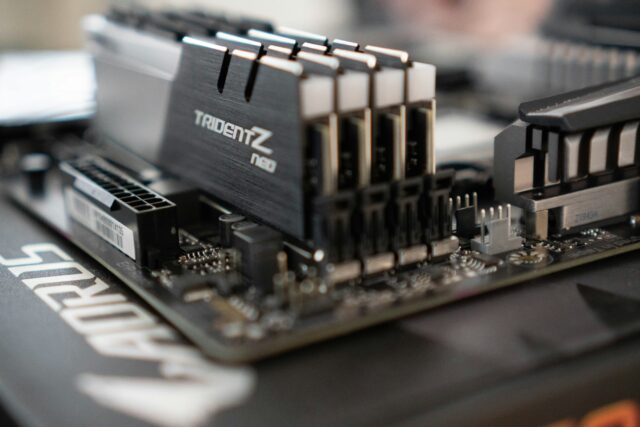Orange Light on Motherboard: What Does It Mean for Your PC?

Encountering an orange light on your motherboard can be an unsettling experience, often leading to questions about the health and functionality of your computer. This indicator, while not universally standardized, typically signals specific issues that require immediate attention. In this article, we delve into the meaning behind this orange light, exploring its common causes and providing you with a detailed troubleshooting guide to address and resolve the underlying issues. By understanding what this light signifies and how to react appropriately, you can ensure your computer remains in optimal working condition.
Contents
- 1 Understanding the Orange Light Indicator
- 2 Conclusion
- 3 FAQ
- 3.1 What Does the Orange Light on a Motherboard Mean?
- 3.2 Is an Orange Light on a Motherboard a Cause for Immediate Concern?
- 3.3 How Can I Fix an Orange Light on My Motherboard?
- 3.4 Can the Orange Light Indicate a Problem With My CPU?
- 3.5 Does Resetting the CMOS Help With the Orange Light on the Motherboard?
- 3.6 Can Overheating Cause the Orange Light to Turn On?
- 3.7 Should I Replace My Motherboard If the Orange Light Persists?
Understanding the Orange Light Indicator
The appearance of an orange light on a motherboard is a critical communication tool, designed to alert users to potential issues within their computer systems. This section unpacks the significance of indicator lights on motherboards, focusing specifically on what an orange light might indicate and why it demands your attention.
The Role of Indicator Lights
Indicator lights on a motherboard are not mere decorations; they serve as essential diagnostic tools. These lights offer a visual representation of the system’s status, highlighting operational successes or pinpointing specific issues. The orange light, in particular, is often associated with certain types of hardware issues, making it a vital signal for users to understand and act upon.
Common Triggers for an Orange Light
The causes behind the activation of an orange light on a motherboard can vary, each pointing to different potential issues within the computer. Some of the most common reasons include:
- DRAM Issues: Memory modules, or DRAM, are crucial for the smooth operation of your computer. An orange light may indicate problems related to these modules, such as incorrect installation, compatibility issues, or outright failure.
- Power Supply Unit (PSU) Concerns: The PSU is the heart of your computer’s electrical system. An orange light might signal issues related to power delivery, suggesting problems with the PSU itself.
- Motherboard Complications: Although less frequent, the motherboard may be the source of the problem. This could be due to physical damage, firmware issues, or other malfunctions within the motherboard.
By recognizing and understanding the implications of the orange light, you can take the first crucial steps toward troubleshooting and resolving the issues at hand, ensuring the longevity and reliability of your computer.
Conclusion
The orange light on a motherboard is a crucial diagnostic tool that should not be ignored. By understanding its causes and knowing how to troubleshoot effectively, you can protect your PC from more severe damage. Remember, the key to resolving orange light issues lies in prompt attention and systematic troubleshooting.
FAQ
What Does the Orange Light on a Motherboard Mean?
The orange light on a motherboard acts as a diagnostic indicator, signaling potential issues that could be affecting your computer. Commonly, this light points to concerns with the power supply unit (PSU), memory modules (DRAM), or the motherboard itself. It’s essential to interpret this signal as a call to investigate and address these potential issues promptly to maintain system health.
Is an Orange Light on a Motherboard a Cause for Immediate Concern?
Yes, an orange light on a motherboard should be treated with concern. It does not necessarily predict a catastrophic failure but indicates that something within the PC may not be functioning correctly. This signal warrants immediate attention to prevent potential damage or system failure, ensuring that the problem is identified and resolved quickly.
How Can I Fix an Orange Light on My Motherboard?
To address an orange light on your motherboard, start with ensuring that the RAM is correctly installed and compatible with your system. Next, assess the PSU for any signs of failure and check for visible damage to the motherboard. An outdated BIOS can also cause issues, so consider updating it as part of your troubleshooting steps.
Can the Orange Light Indicate a Problem With My CPU?
An orange light can indicate a CPU problem, though this is less common. Issues such as power delivery problems or compatibility issues between the CPU and motherboard can trigger this light. It’s vital to consider CPU-related problems in your troubleshooting process, especially if other potential issues have been ruled out.
Does Resetting the CMOS Help With the Orange Light on the Motherboard?
Resetting the CMOS is a useful step in troubleshooting an orange light on the motherboard. This action returns the BIOS settings to their default state, potentially resolving any misconfigurations or errors that could be causing the light to activate. It’s a simple yet effective way to address certain types of motherboard issues.
Can Overheating Cause the Orange Light to Turn On?
Overheating itself typically triggers different indicators or system behaviors rather than an orange light. However, prolonged overheating can lead to component failure or other serious issues, which might be signaled indirectly by an orange light. It’s crucial to ensure your system has adequate cooling to prevent overheating.
Should I Replace My Motherboard If the Orange Light Persists?
Replacing the motherboard should be a last resort after all other troubleshooting steps have been exhausted. If the orange light persists despite your efforts, it’s advisable to consult with a professional. They can help determine whether a replacement is necessary or if there’s an alternative solution to resolve the issue.